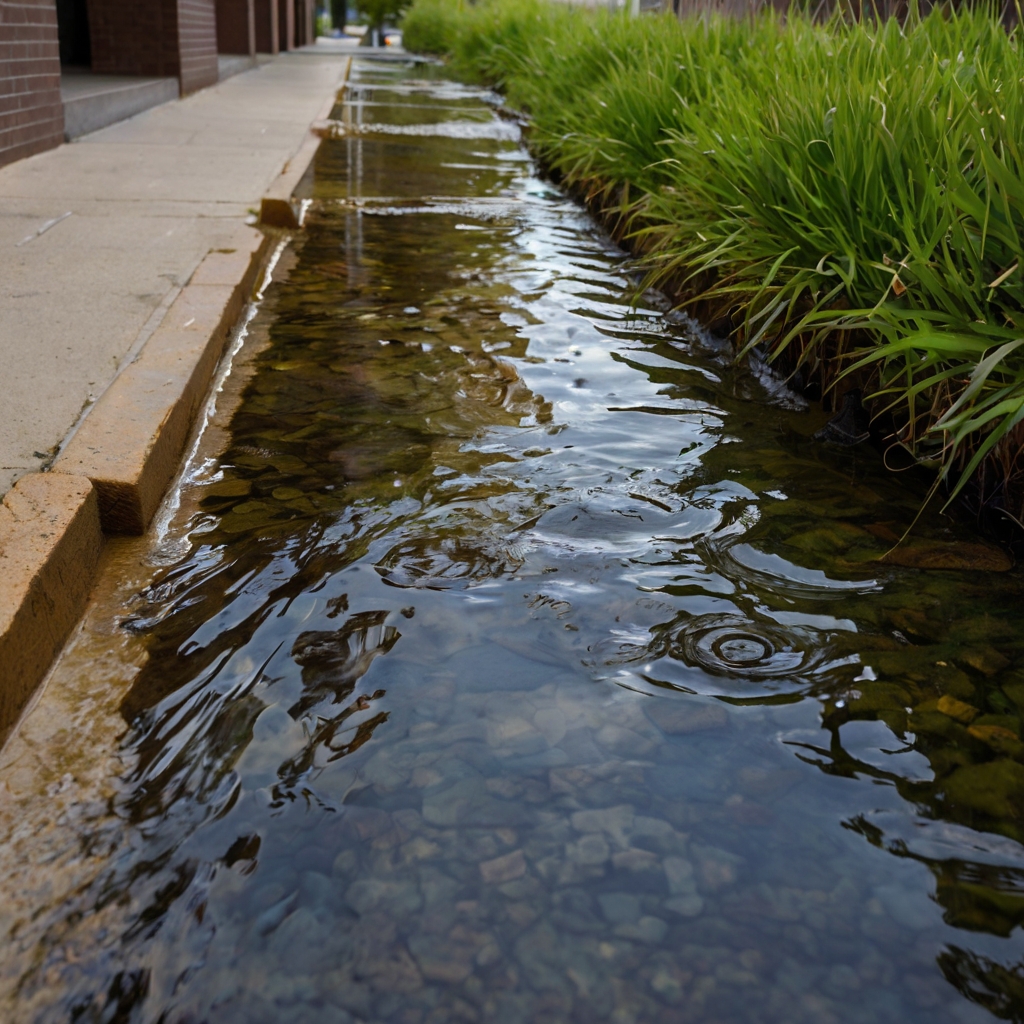Urban environments encounter difficulty handling stormwater because many paved surfaces hinder the natural absorption of water into the soil. Intense rainfall can result in flooding, erosion, and pollution of waterways as runoff transports debris and pollutants. Effective planning and infrastructure development are crucial for managing stormwater and mitigating its effects on urban areas and communities.
One approach to addressing this issue is focusing on residential stormwater management. Homeowners can help by using rain gardens, permeable pavement, and rain barrels to slow and absorb runoff before it reaches storm drains. These solutions reduce the risk of flooding, protect water quality, and replenish groundwater supplies. By combining large-scale city planning with individual efforts, urban areas can create a more sustainable approach to managing stormwater effectively.
 Understanding Stormwater Issues
Understanding Stormwater Issues
Stormwater refers to the surplus runoff that happens during rainfall events, and it can lead to serious problems in urban settings because of non-permeable surfaces like asphalt and concrete. These surfaces prevent water from being absorbed, leading to rapid water movement that can result in flooding, erosion, and damage to infrastructure. Additionally, the swift flow of water can carry pollutants and sediments, worsening water quality in nearby rivers and lakes. Key sources of stormwater runoff include agricultural lands, construction sites, and industrial areas, which often introduce contaminants like fertilizers and chemicals. To effectively manage stormwater, it is essential to have a comprehensive understanding of its sources and impacts.
Sustainable Management Techniques
Sustainable management techniques like green infrastructure effectively manage stormwater by mimicking natural processes. Solutions like rain gardens, green roofs, and permeable pavements collect and absorb rainwater from various sources. These eco-friendly installations enhance urban aesthetics and relieve pressure on municipal drainage systems. By promoting evaporation and transpiration, they reduce runoff and help replenish groundwater.
Retention ponds and wetlands also play crucial roles, capturing runoff and filtering out sediment and pollutants before they enter natural waterways. These sustainable solutions provide a comprehensive approach to addressing stormwater issues.
Role of Technology in Stormwater Management
Technology revolutionizes stormwater management by combining advanced drainage systems, sensors, and automated controls to manage water flow. These systems enable real-time observation and modification of valves and gates, enhancing stormwater management during intense rainfall. Furthermore, data analytics are essential for predicting weather trends and estimating stormwater volumes. Urban planners can leverage historical weather data and climate projections to create predictive models, enabling proactive stormwater management and reducing potential impacts from severe weather events.
Regulatory Framework and Compliance
Stormwater management is governed by a regulatory framework designed to reduce pollution and ensure compliance with environmental standards. This framework includes establishing permits and guidelines for best practices in the design and maintenance of stormwater infrastructure. These requirements aim to minimize pollutants and protect aquatic life and human populations. Promoting green infrastructure and innovative water management technologies, these regulations help urban areas manage stormwater effectively and contribute to broader environmental conservation efforts.
Community Involvement and Education
Community engagement is essential for developing effective stormwater management strategies. Public awareness campaigns help educate residents about sustainable household practices and encourage simple actions, such as installing rain barrels and replacing impervious surfaces. Community-driven projects showcase the impact of collective action and local leadership, fostering environmental stewardship and resilience within neighborhoods. Workshops, volunteer programs, and collaborative projects enable communities to contribute meaningfully to local stormwater management efforts, promoting cleaner and greener environments.
Cost-Benefit Analysis of Stormwater Solutions
Investing in stormwater management infrastructure can be expensive, but conducting a cost-benefit analysis can help assess the economic viability of various strategies. Green infrastructure and advanced technologies can lower repair and maintenance costs related to flooding and water damage. Sustainable stormwater solutions can also increase property values, reduce healthcare expenses, and create green jobs. Evaluating these benefits facilitates informed decision-making and helps prioritize limited municipal resources.